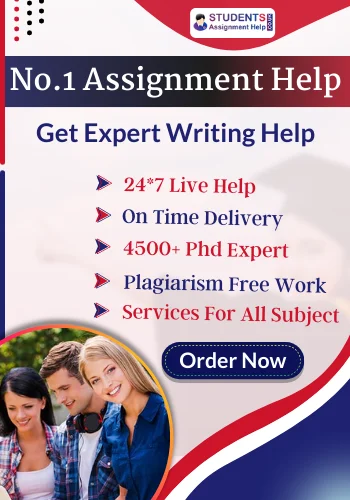- Lead Adult Care Worker Level 3 Safeguarding Assessment | Salford City College
- K/650/1144 Professional Development and Academic Writing Skills Assessment
- M26753 Mechanical Principles Assignment Brief | University Centre IOW
- Care Safeguiding Children Assignment | Oxford Brookes University
- PSY4011 Developmental Psychology Assessment Brief | Arden University
- QSP7PCM Professional Cost Management Assignment 2 September 2025 | UCEM
- EGR2006M Control Systems Assignment 1 Brief | University of Lincoln
- MBA7066 Innovation and Entreprenuership Assignment Portfolio 2025 | UGM
- Contract Law Assessment 2 Problem Scenario 2025-26 | University Of Salford
- Operations & Supply Chain Management Assignment Brief : E-Commerce Supply Chain Efficiency
- Unit 1 Programming Assignment 2025-26 | ESOFT Metro Campus
- K/651/4745 Unit 1 Teaching My Subject Written Assignment | Britannia Education Group
- H/650/1099 Level 4 Academic Writing and Research Skills Assignment Brief | LSBU
- ASB-4012 Codding for Business Application Assignment – Project in R | Bangor University
- Unit: Team Management in Health and Social Care OTHM Level 5 Diploma Assignment
- BTEC Level 3 Unit 4 Programming Assignment – Concepts of Programming
- HSO4004 Principles of Care Assignment-1 and Assignment-2 Semester-1 September 2025-26
- 1031ENG-N Civil Engineering Construction Technology In-Course Assessment (ICA) Group Report | Teesside University (TU)
- MOD009382 Finance and Governance in Health and Social Care 011 Assessment Coursework Report | Anglia Ruskin University
- Geotechnical Engineering Assignment 2025/26 – University Of Surrey (UniS)
UNIT 45 IOT L5 BTEC HND Assignment Brief Sep 2024
| University | ICON College of Technology and Management (ICTM) |
| Subject | Internet Of Things |
BTEC Higher National Diploma (HND) in Computing
Assignment Overview
| Programme Title | BTEC Higher National Diploma (HND) in Computing | |
|---|---|---|
| Unit Number and Title | 45 Internet of Things (L5) | |
| Assignment Number & Title | 1 of 1 Internet of Things (L5) | |
| Unit Leader | – | |
| Assessor(s) | Kamran Ali | |
| Issue Date | 12/10/2024 | |
| Final Assignment Submission Deadline | 06 – 08 Jan 2024 – 4:00 PM | |
| Late Submission Deadline | 08 Jan 4:00 PM – 09 Jan 2024 4:00 PM | |
| Resubmission Deadline | TBA | |
| Feedback | Formative feedback will be available in class during the semester. Final feedback will be available within 2–3 weeks of the assignment submission date. | |
Assignment Aim & Objective
The Internet of Things (IoT) is rapidly transforming how we interact with both physical and digital worlds. It is a network of interconnected devices that communicate, share data, and make autonomous decisions. This assignment aims to explore the essential aspects of IoT in the context of software application development, evaluate the role and characteristics of IoT, and guide students through the process of designing, developing, and evaluating an IoT application.
Assignment Scenario
This assignment requires you to analyse, design, develop, and evaluate an Internet of Things (IoT) application. You will work through the various stages of the IoT application lifecycle, from initial analysis to final evaluation. The assignment is divided into four main tasks aligned with the Learning Outcomes (LOs) specified below.
Task Breakdown
Task 1: Analysis of IoT Design Aspects (LO1)
- Identify and explain key IoT components, including sensors, actuators, communication protocols, and cloud services.
- Discuss the importance of data collection, processing, and analysis in IoT applications.
- Examine scalability, security, and interoperability as critical design considerations.
- Provide examples of existing IoT applications and analyze how they incorporate these aspects in their design.
Task 2: IoT Application Planning (LO2)
- Select a specific problem to solve with your IoT application (e.g., smart home management, health monitoring, environmental monitoring).
- Identify and describe the appropriate IoT architecture (e.g., cloud-based, edge computing) for your application.
- List the frameworks, tools, and hardware that will be used in your application development. Provide justification for your choices.
- Create a flowchart or diagram illustrating the interaction between different components of your IoT application.
Task 3: IoT Application Development (LO3)
- Implement your IoT application using a combination of the hardware and software identified in Task 2.
- Document the development process, including any coding, integration, and configuration steps.
- Test your application to ensure it meets the initial design requirements and functions correctly.
- Provide screenshots of your application in operation, showcasing its features and functionalities.
Task 4: Evaluation of IoT Application (LO4)
- Assess the problem your application addresses and discuss its relevance to users.
- Analyse the potential impact on individuals, businesses, and society. Consider benefits such as improved efficiency, cost savings, and enhanced user experiences.
- Identify potential challenges and limitations your application may face when integrating into the broader IoT ecosystem (e.g., security risks, data privacy concerns, interoperability issues).
- Conclude with recommendations for future improvements or enhancements to your application.
Appendices
Note: You should attach all the supporting documents as a separate file in the appendix section of your assignment. Without appropriate evidence(s), your assignment will not be marked.
- A complete network simulation file must be attached to the written report.
Learning Outcomes and Assessment Criteria
| Learning Outcomes and Assessment Criteria | Pass | Merit | Distinction |
|---|---|---|---|
| LO1 Analyse what aspects of IoT are necessary and appropriate when designing software applications | P1: Explore various forms of IoT functionality. P2: Review standard architecture, frameworks, tools, hardware, and APIs available for use in IoT development. | M1: Evaluate the impact of common IoT architecture, frameworks, tools, hardware, and APIs in the software development lifecycle. M2: Review specific forms of IoT architecture, frameworks, tools, hardware, and APIs for different problem-solving requirements. | D1: Evaluate specific forms of IoT architecture and justify their use when designing software applications. |
| LO2 Outline a plan for an appropriate IoT application using common architecture, hardware, and APIs | P3: Investigate architecture, frameworks, tools, hardware, and API techniques available to develop IoT applications. P4: Determine a specific problem to solve using IoT. | M3: Select the most appropriate IoT architecture, frameworks, tools, hardware, and API techniques to include in an application to solve this problem. M4: Apply your selected techniques to create an IoT application development plan. | D2: Make multiple iterations of your IoT application and modify each iteration with enhancements gathered from user feedback and experimentation. |
| LO3 Develop an IoT application using any combination of hardware, software, data, platforms, and services | P5: Employ an appropriate set of tools to develop your plan |
Tackling the complexities of HND Internet of Things Transport Network Design (L5)? Let HND Assignment Help UK simplify your journey! Our experts provide tailored assistance for designing IoT-enabled transport networks, ensuring your coursework meets academic standards. Achieve success with reliable, high-quality support from professionals who understand your unique needs and challenges.




